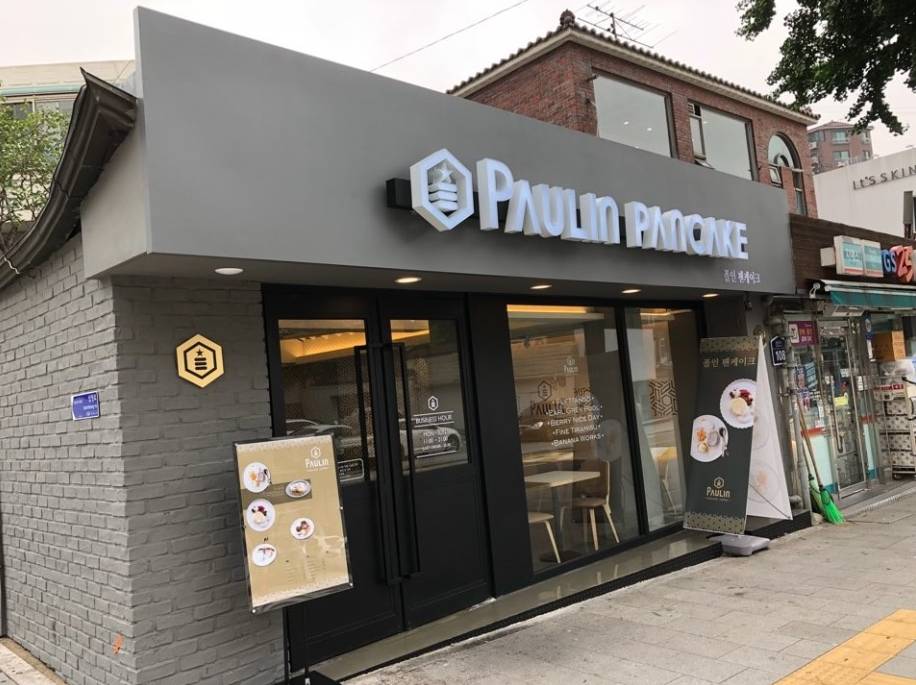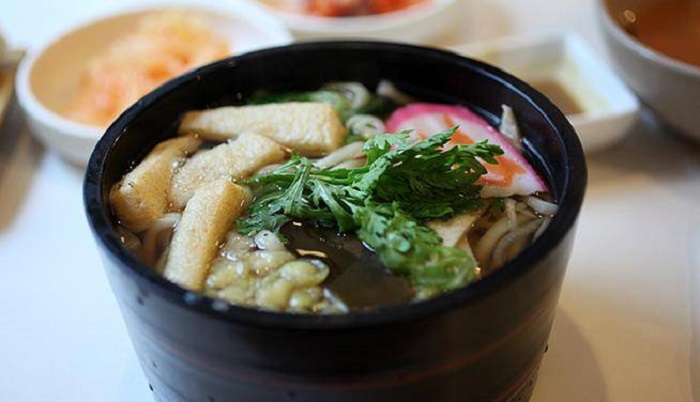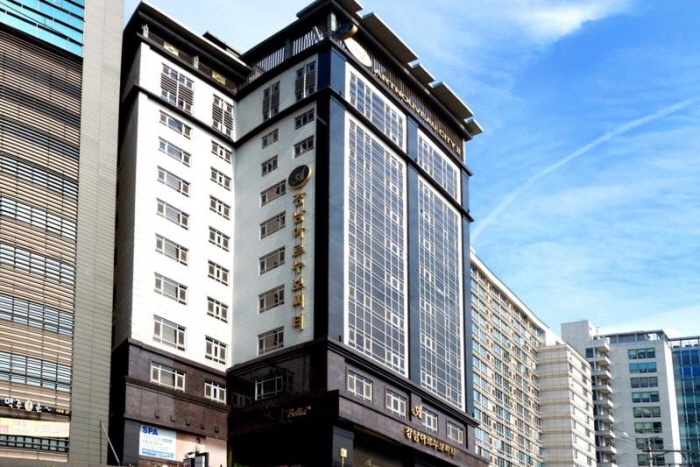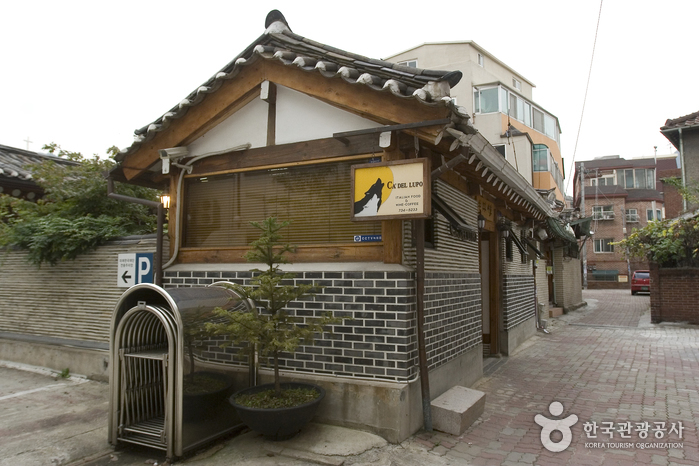PAULIN PANCAKE - Samcheong Branch(폴인팬케이크 삼청)
5.5Km 2021-04-15
108, Samcheong-ro, Jongno-gu, Seoul
+82-2-737-8952
This is a cafe located in Jongno, Seoul. The best menu at this restaurant is souffle pancakes. Souffle pancake is a popular dessert in Korea.
Gami Bunsik (가미분식)
5.5Km 2021-03-26
2, Ewhayeodae 8-gil, Seodaemun-gu, Seoul
+82-2-364-3948
This snack restaurant near Ewha Women’s University has been around for over 40 years. This Korean dishes restaurant is located in Seodaemun-gu, Seoul. The representative menu is stir-fried rice cake with cheese.
Mercado Yangnyeongsi de Hierbas Medicinales de Seúl (서울 약령시장)
5.5Km 2024-02-01
Yangnyeong Jungang-ro 10, Dongdaemun-gu, Seúl.
Chikibaitu (Chickyx2) - Ewha Woman's Univ. Main Branch (치키바이투 (이대본점))
5.5Km 2021-11-12
29, Ewhayeodae-gil, Seodaemun-gu, Seoul
+82-2-365-4123, +82-10-7119-0566
Chikibaitu opened its doors in December 2010,
and allows guests to chow down on some fried chicken alongside their meals. They
even reproduced the famous chicken comic character as a mascot of sorts. Also,
they provide special finger gloves called "finger-naps" that make
the experience more fun. You will never get bored with its unique fried chicken
taste and set menu items. Also, while waiting for your food to be served, you can try
your hand at the board game Othello, one of which is placed at every table.
The restaurant serves standard
meals, fried chicken, and drinks from noon to midnight. Another interesting thing about this restaurant is it sells homemade sikhye (sweet rice drink),
which is said to aid digestion. All menu items are available for take-out. If
it's raining when you leave, staff at Chikibaitu will lend you a free umbrella
and offer a discount for returning it on your next visit.
Nuwa [Korea Quality] / 누와 [한국관광 품질인증/Korea Quality]
5.5Km 2021-03-29
3-1, Pirundae-ro 5na-gil, Jongno-gu, Seoul
This hanok (traditional Korean house) is located deep in the Seochon Village, west of Seoul’s Gyeongbokgung Palace. Its tasteful renovation of a small 33 m2 hanok made it highly popular among the younger guests. The courtyard has a low maple tree and tastefully arranged stones, while the hanok is capable of accommodating up to 2 persons.
This L-shaped hanok has a full window wall facing the living room, which is furnished with a low walnut table and a bathtub. Visitors can enjoy premium tea at the table. The bathtub, which is connected to the table at one end, can be used mainly for a foot bath with bath salts that assist circulation. There is also a restroom in the building.
Nuwa’s bedroom has a circular window, much like the full moon, with a view of the garden and the fringes of the Inwangsan Mountain.
Mercado Tongin (통인시장)
5.5Km 2025-07-01
Jahamun-ro 15-gil 18, Jongno-gu, Seúl.
Gangnam Artnouveau City Hotel (강남아르누보씨티호텔)
5.5Km 2025-07-28
49, Seocho-daero 74-gil, Seocho-gu, Seoul
Universidad Femenina de Ewha (이화여자대학교)
5.5Km 2023-07-03
Ewhayeodae-gil 52, Seodaemun-gu, Seúl.
Ca'del Lupo (까델루뽀)
5.5Km 2020-04-27
5-5, Jahamun-ro 16-gil, Jongno-gu, Seoul
+82-2-734-5233
Ca'del Lupo is an Italian restaurant, closely located to Paris Baguette in Hyoja-dong, Jongno-gu near Gyeongbokgung Palace Station. Though the restaurnat masters delicious homemade Italian cuisine on the inside, the exterior is wholly Korean. This unique combination of Hanok (traditional Korean house) style housing and Western foods is drawing a lot of people to Hyoja-dong. The great mix of both cultures can be seen in the sophisticated decorations and from the amazing food. The herbs they use are picked directly from the restaurant's personal garden. But to enjoy the atmosphere here, you will have to make a reservation far in advance.
Templo Bongeunsa en Seúl (봉은사(서울))
5.5Km 2025-06-20
Bongeunsa-ro 531, Gangnam-gu, Seúl
El templo se encuentra localizado al norte del Centro de Convenciones y Exhibiciones de Corea (COEX). Fue construido durante el 10º año del reinado del rey Wonseong (794), que perteneció a la dinastía Silla, por el maestro Yeonhue, y en aquel tiempo recibía el nombre de Gyeonseongsa. Luego, en el año 1498, la reina Jeonghyeon, esposa del rey Seongjong, remodeló y amplió el templo, modificando el nombre por Bongeunsa. En un principio, el templo se encontraba ubicado a 1 km de distancia de la Tumba Seolleung; pero durante el reinado de Myeongjong, en la dinastía Joseon, fue trasladado al lugar actual por el monje Bowoo. El templo conserva una gran cantidad de reliquias budistas, textos, sutras, colecciones, etc., relacionados con la historia del budismo, y presenta un total de 3.479 artículos. En particular, el 9 de septiembre de cada año, según el calendario lunar, se celebra un desfile especial que consiste en recorrer las áreas del templo siguiendo los principios budistas y recitando los sutras.



![Nuwa [Korea Quality] / 누와 [한국관광 품질인증/Korea Quality]](http://tong.visitkorea.or.kr/cms/resource/07/2707607_image2_1.jpg)




 Español
Español
 한국어
한국어 English
English 日本語
日本語 中文(简体)
中文(简体) Deutsch
Deutsch Français
Français Русский
Русский